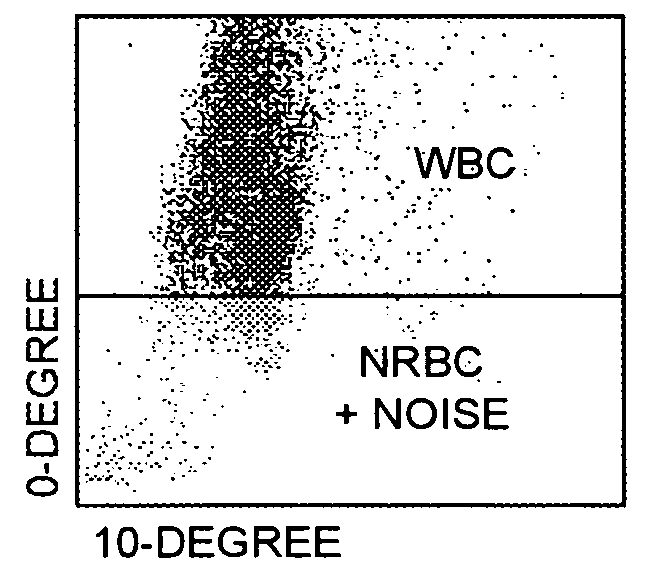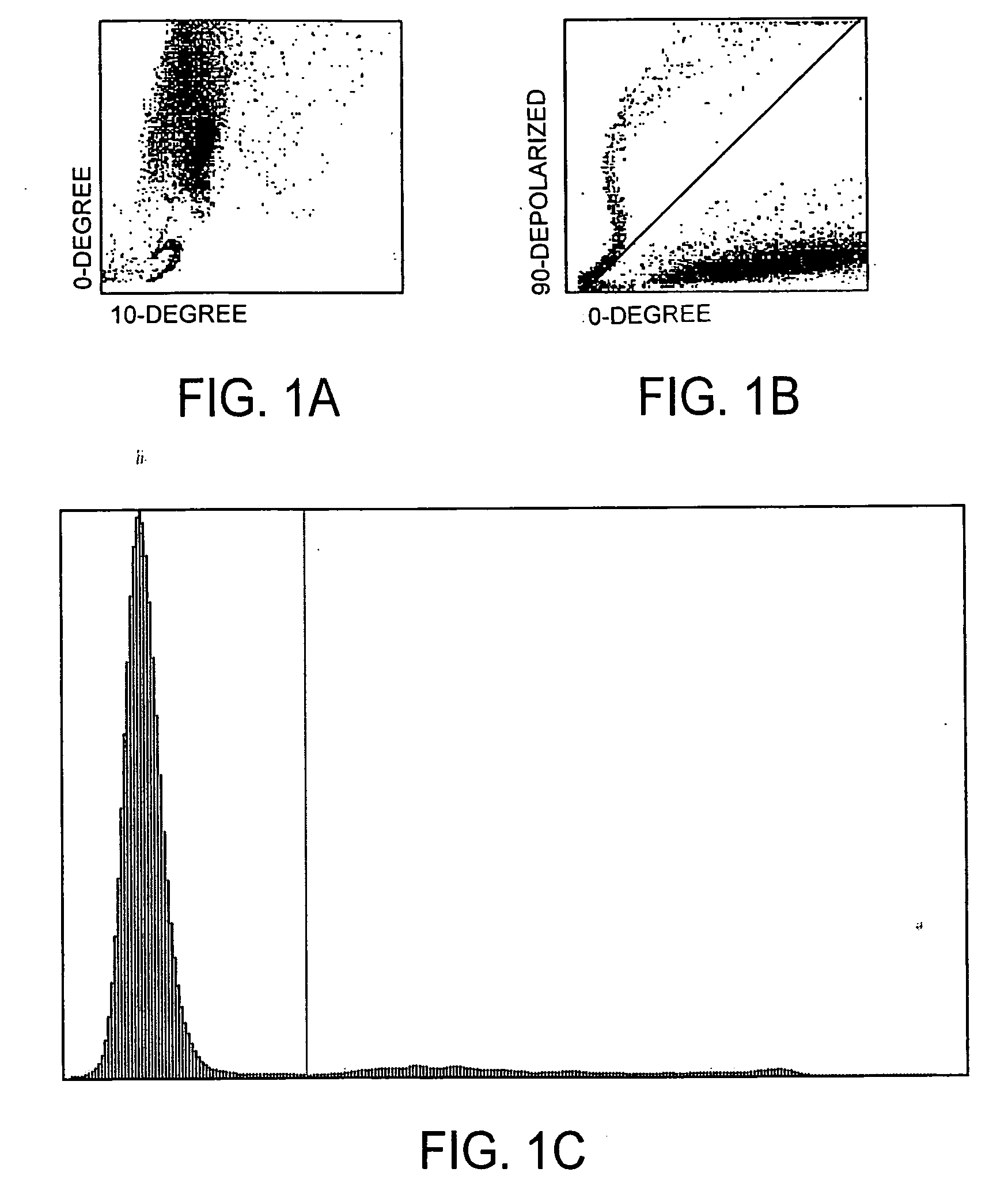Method for determination of nucleated red blood cells and leukocytes in a whole blood sample in an automated hematology analyzer
a whole blood sample and hematology analyzer technology, applied in chemical methods analysis, dead animals, instruments, etc., can solve the problems of inability to report the white blood cell count by manual means, inaccurate white blood cell count, and operator's inability to accurately detect the presence of red blood cells in specimens containing hypotonically resistant red blood cells, etc., to achieve accurate correction of absorbance interference, reduce interference, and reduce the effect of interferen
- Summary
- Abstract
- Description
- Claims
- Application Information
AI Technical Summary
Benefits of technology
Problems solved by technology
Method used
Image
Examples
example 1
[0074]The current CELL-DYN® 3000 Series analyzer and CELL-DYN® Diff Screen reagents, diluent, and lyse reagent, are used for this method. The diluent was described in U.S. Pat. No. 5,227,304, previously incorporated herein by reference and the lyse reagent was described in U.S. Pat. No. 5,958,781, previously incorporated herein by reference. The method involves the step of mixing lyse reagent with a whole blood sample diluted by a diluent, wherein the ratio lyse reagent to diluent ranges from about 1 part lyse reagent to from about 3 parts to about 8 parts diluent. The lyse reagent lyses the whole blood sample to form a lysate. The lysate is then transferred to the analyzer for white blood cell and nucleated red blood cell counting. During actual operation, 200 μL of lyse reagent diluted with 900 μL of diluent is then immediately mixed with 10 μL of blood / sample in the mixing chamber. After a bubble mixing, the lysate is analyzed automatically in the analyzer.
example 2
[0075]Referring now to FIGS. 1A, 1B, and 1C, with respect to the scatter plot depicting 90° depolarized light scatter versus 0° light scatter for removing depolarizing interference, it can be seen that depolarizing interference is removed because there is a discernible separation between the events above the diagonal line and the events below the diagonal line in FIG. 1B. For each of the scatter plots depicting 90° depolarized light scatter versus 0° light scatter, an imaginary line is drawn to each event from the point x=0, y=0. The angle between the imaginary line and the x-axis is determined for each event. The x-axis of the 0°, 90° depolarizing histogram is divided between the depolarizing events (e.g., lipid events) and the non-depolarizing events (e.g., white blood cell events, nucleated red blood cell events, platelet clump events, and other non-depolarizing substance events).
[0076]The 0°, 90° depolarized histogram for removing depolarizing interference shows a high frequency...
example 3
[0077]Referring now to FIGS. 2A, 2B, and 2C, with respect to the differentiation between white blood cells and the combination of nucleated red blood cell events plus noise, it can be seen that there is a high frequency of nucleated red blood cell events plus noise at the bottom of the scatter plot, below the horizontal line in FIG. 2A, depicting 0° light scatter versus 10° light scatter, and a high frequency of white blood cell events at the top of the scatter plot, above the horizontal line in FIG. 2A, depicting 0° light scatter versus 10° light scatter. It can also be seen that there is a high frequency of nucleated red blood cell events plus noise at the left side of the scatter plot, to the left of the vertical line in FIG. 2B, depicting 90° depolarized light scatter versus 0° light scatter, and a high frequency of white blood cell events at the right side of the scatter plot, to the right of the vertical line in FIG. 2B, depicting 90° depolarized light scatter versus 0° light ...
PUM
| Property | Measurement | Unit |
|---|---|---|
| osmolality | aaaaa | aaaaa |
| concentration | aaaaa | aaaaa |
| frequency | aaaaa | aaaaa |
Abstract
Description
Claims
Application Information
 Login to View More
Login to View More - R&D
- Intellectual Property
- Life Sciences
- Materials
- Tech Scout
- Unparalleled Data Quality
- Higher Quality Content
- 60% Fewer Hallucinations
Browse by: Latest US Patents, China's latest patents, Technical Efficacy Thesaurus, Application Domain, Technology Topic, Popular Technical Reports.
© 2025 PatSnap. All rights reserved.Legal|Privacy policy|Modern Slavery Act Transparency Statement|Sitemap|About US| Contact US: help@patsnap.com



